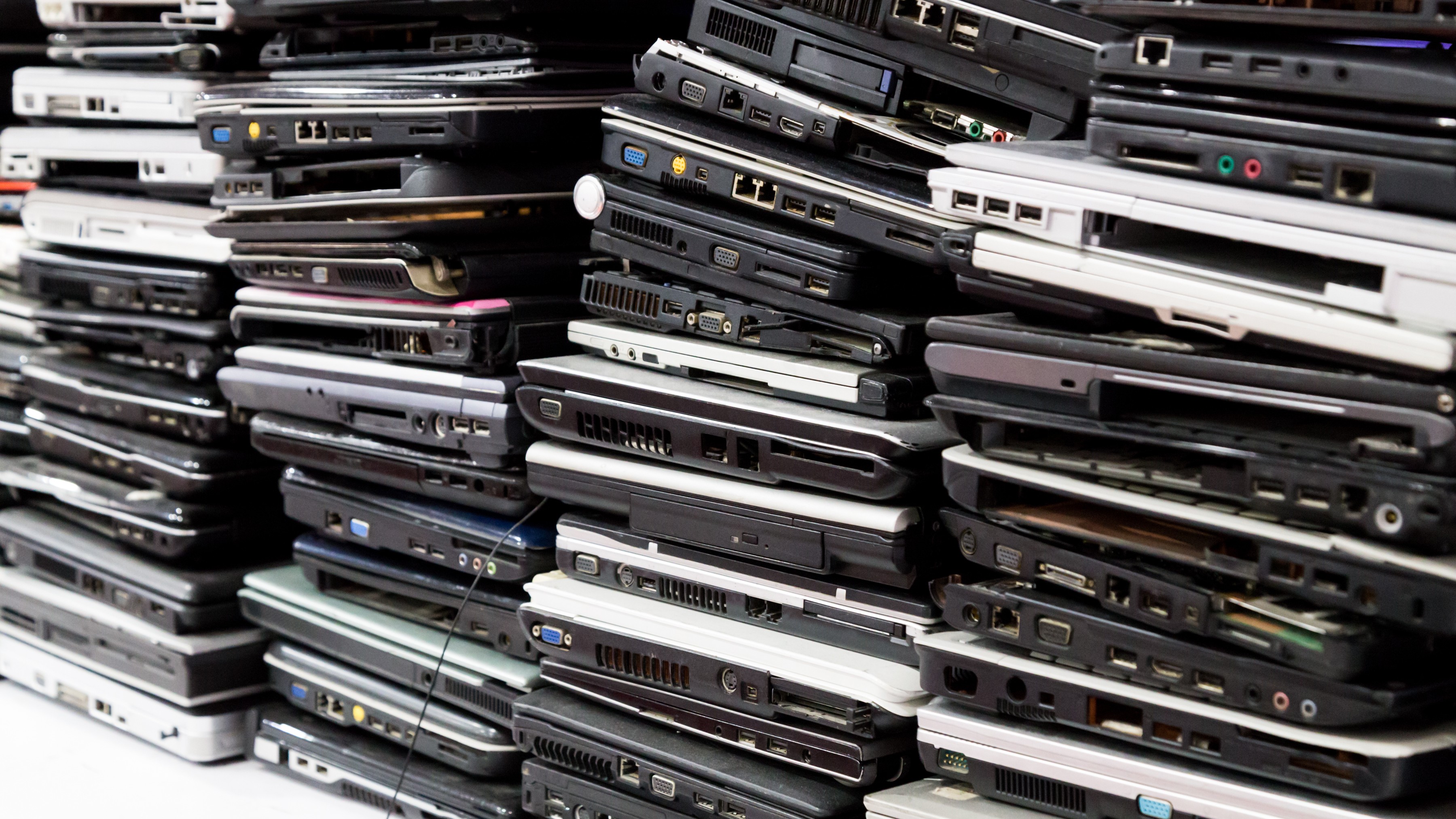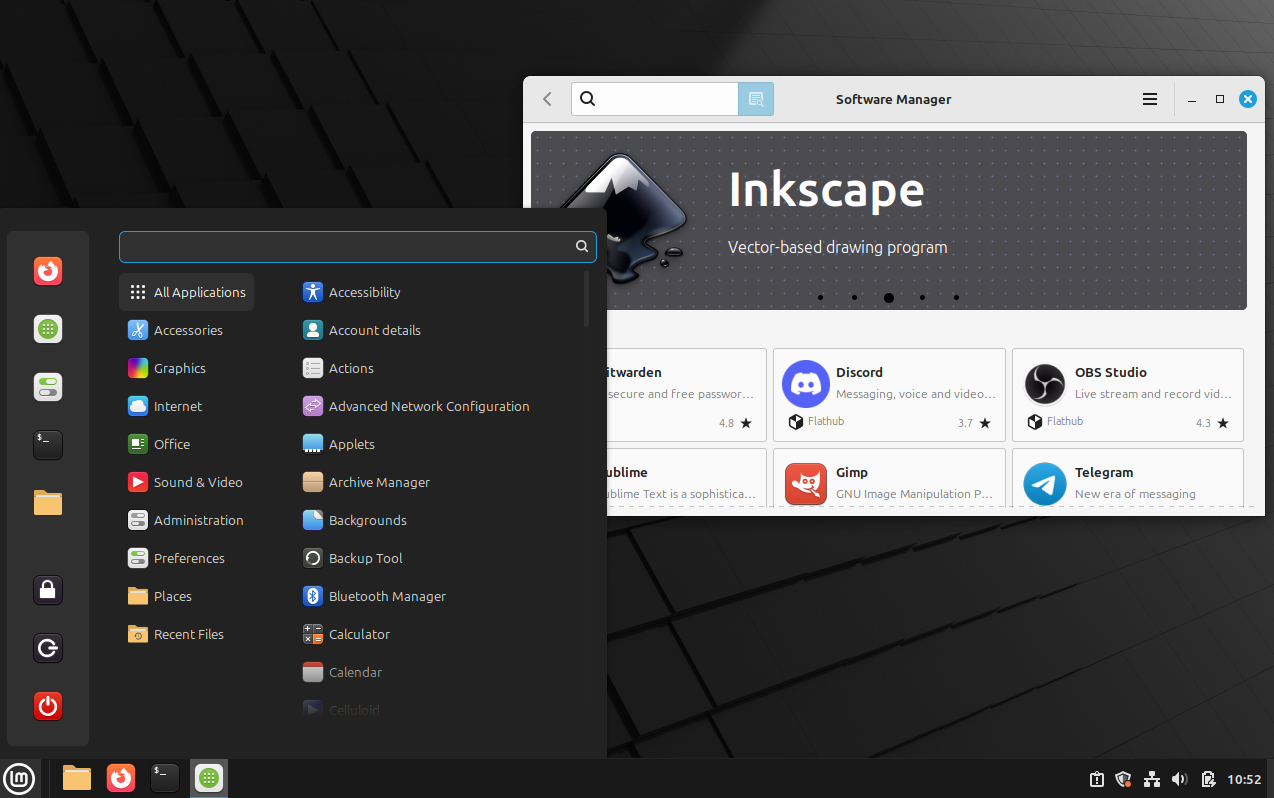Linux or Landfill? End of Windows 10 Leaves PC Charities with Tough Choice
Many donateable PCs can’t run Windows 11. Should non-profits still be giving them away? Should they install Linux instead?

Unless Microsoft changes its mind at the last minute, Windows 10 will stop receiving free security updates this coming October. For those who can upgrade to Windows 11, the solution is obvious: Run the new OS even if you don’t like it. But there are hundreds of millions – by one estimate 240 million – PCs that don’t meet Microsoft’s stringent Windows 11 hardware requirements.
If you’re a consumer or a business, Microsoft and the PC industry would very much like you to toss these systems in the trash and buy new computers to take their place. But forgotten in this capitalist crush are all the charities that refurbish older computers and give them to people who can’t afford to purchase one.
These non-profits are sitting on a plethora of still-working computers that can’t run Microsoft’s latest OS. Do they give clients a soon-to-be-insecure Windows 10 computer, send older computers to an ewaste recycler, toss them in the trash or try to install some form of Linux?
And Windows 11-ineligible PCs can be pretty recent and powerful. Microsoft’s list of system requirements for Windows 11 seem basic at first glance. You need a 1-GHz or faster CPU with at least two cores, you need 4GB of RAM, 64GB of storage, Secure Boot capability and TPM 2.0 compatibility.
However, Microsoft’s supported Intel CPU list for Windows 11 only goes back as far as 8th Gen chips (Coffee Lake), which first came out in 2017, and its AMD CPU list only incorporates Ryzen 2000 series (from 2018) and above. That means computers which came out in 2017, 2018 or maybe even 2019 (with a last-gen chip for the time) are ineligible. They could have 16GB of RAM and a 500GB SSD and still not make the cut.
Some of these ineligible computers will continue to run old Windows, others will be loaded with a different OS entirely. Some will end up in ewaste recycling where most of the parts can be reclaimed. However, a good chunk will end up in landfills. According to one estimate, only 14 to 40 percent of U.S. ewaste gets recycled at all.
My 12 year old son and I recently joined a local computer refurbishment charity where we live on Long Island. The folks who run our organization are still installing Windows 10 on non-Windows 11-eligible computers because they don’t want to give our clients an unfamiliar user experience.
Get Tom's Hardware's best news and in-depth reviews, straight to your inbox.
Many of the clients are seniors, and they may not have the patience or tenacity to work with a different OS that can’t run all the same software they are used to. School children are used to running Windows in school and would want a computer that more closely mirrors the experience they have in class. Installing a new OS might also mean more support calls from folks who can’t figure out the subtle differences between the Linux desktop and Windows.
However, by sticking with Windows 10, we are also leaving our clients with insecure computers that could put them in some danger when the updates stop in October.
“Deploying Windows 10 at this time is a bad idea,” Chester Wisniewski, who serves as Director and Global Field CISO for Sophos, a major security services company, told us. “The writing is on the wall. Microsoft has made the internal decision to obsolete this equipment, so I guess they just don't want more people to use Windows.”
It almost goes without saying that charity clients won’t be the only ones running Windows 10 later this year. According to Statcounter, Windows 10 still makes up 58.7 percent of all Windows installs versus just 38.1 percent for Windows 11. It seems unlikely that all of those computers will have been upgraded to Windows 11 or replaced with newer, Windows 11 PCs by October.
It seems even more unlikely that those 58.7 percent will be paying $61 per year for Microsoft’s Extended Security Update program, which will bring continued patches to Windows 10 PCs after October 2025. And charities and their clients are extremely unlikely to have the funds or the desire to pay ongoing service fees to keep the OS up-to-date. We asked Microsoft for its take on the situation, but the company would not comment on the record.
So how bad will it really be to run an end-of-lifed Windows 10? Should people worry? Wisniewski and other experts I talked to are unequivocal. You’re at risk.
“To put this in perspective, today [the day we talked] was Patch Tuesday,” he said. “There were 57 vulnerabilities, 6 of which have already been abused by criminals before the fixes were available. There were also 57 in February and 159 in January. Windows 10 and Windows 11 largely have a shared codebase, meaning most, if not all, vulnerabilities each month are exploitable on both OSs. These will be actively turned into digital weapons by criminals and nation-states alike and Windows 10 users will be somewhat defenseless against them.”
So, in short, even though Windows 10 has been around since 2015, there are still massive security holes being patched. Even within the past few weeks, dozens of vulnerabilities were fixed by Microsoft. So what’s a charity to do when these updates are running out and clients will be left vulnerable?
“What we decided to do is one year ahead of the cutoff, we discontinued Windows 10,” said Casey Sorensen, CEO of PCs for People, one of the U.S.’s largest non-profit computer refurbishers. “We will distribute Linux laptops that are 6th or 7th gen. If we distribute a Windows laptop, it will be 8th gen or newer.”
Sorensen said that any PC that’s fifth gen or older will be sent to an ewaste recycler.

PCs for People has refurbishing centers in 11 states and distributes computers throughout the United States. The company sells refurbished computers at very affordable prices, both through its websites and some brick and mortar locations. As of this writing, the website has a ThinkPad T490 with Windows 11 and 8GB of RAM for just $125. Sorensen also said that low-income individuals can qualify for a completely free laptop and others can buy low-cost Internet connectivity so they can get online.
Every year, the company refurbishes 140,000 PCs, most of which are donated by corporations. PCs for people then wipes the drives, puts on a fresh OS and even replaces laptop batteries if they don’t hold a significant amount of their original charge. However, the company also has to send 7 million pounds of ewaste from outdated or unfixable gear to recyclers.
Sorensen, who founded the company in 1998, told us that he’s comfortable giving clients computers that run Linux Mint, a free OS that’s based on Ubuntu. The latest version of Mint, version 22.1, will be supported until 2029.
“Ten years ago if we distributed Linux, they would be like what is it,” he said. But today, he notes that many view their computers as windows to the Internet and, for that, a user-friendly version of Linux is acceptable.
To see what some of Sorensen’s clients experience, I installed Linux Mint 22.1 into a virtual machine on my desktop. The process took more than 30 minutes and while the user interface was very Windows-like, complete with a Start menu button in the lower left corner, it wasn’t Windows. Instead of the Microsoft Store, there’s Software Manager, which lacked a lot of key titles.

Google Chrome browser isn’t in the store, but open-source Chromium is. Instead Firefox was the default browser. You can install Google Chrome if you go to Google’s site and know that you need to download the installer for Ubuntu Linux (I was using Mint, but Mint is based on Ubuntu).
Some of the apps I use most commonly aren’t available for Linux at all, including Microsoft Office, Slack (there’s a beta but no final version) and Notepad++. Instead of the easy-to-use Photoshop Elements, there’s GIMP. Sure, there are alternatives out there, but sometimes you just want the software you’re comfortable with.
While it was easy for me to feel at home on Mint’s “Cinnamon” UI, I wouldn’t hand a computer with this interface to my mother. I’d be getting tons of calls asking me why her fifteen-year-old copy of Print Shop doesn’t work or wondering about how to change settings.
So which choice is right for recyclers with PCs that can’t support Windows 11? Give users a soon-to-be-insecure Windows 10, make them learn Linux or just throw the computer out? Whatever charities choose, there’s sure to be a lot of people running Windows 10 after October and a lot of laptops turning into unnecessary ewaste.
-
COLGeek I don't see this as a tough choice. Install Linux and get the tech to good homes (so to speak).Reply
Modern distros are very capable and user friendly. MS forced changes and regardless of the reasons, they aren't likely to change.
The vast majority of users can adapt to something like Mint, Ubuntu, etc easily, performing all of their needs, for free, and securely.
I get it, not Windows. But in the end, maybe folks will finally learn something new and move away from MS dictating their choices. I doubt it, but there will be a few. -
thx1138v2 I just finished loading Linux Mint Cinnamon on my old W10 machine. It's not hard. The hardest part was creating an install DVD. After that it was pretty easy. Now that I have it, I can install it on as many machines as I want to.Reply -
cknobman Linux is no longer a barrier to being "user friendly" or "familiar".Reply
In fact Windows is so bad now come October I will be installing Linux.
Hoping Valve's SteamOS is an official distro by then. -
erazog If they were mature enough Haiku or ReactOS would be the best options instead of Linux which is still too complex for most average computers users ( I have gone through just above every user friendly linux distro there is and found it lacking). Anything goes wrong with Linux the difficulty curve massively ramps up, its a system by programmers for programmers.Reply
If someone has resources to spare those two OS are what charities or benefactors should be helping.
Haiku is a platform unlike Linux so its comparable to Windows or MacOS with a defined system from top to bottom (Linux is really just the kernel/drivers). Haiku is designed to be a OS just for home computers and runs incredibly fast better than anything else even on very old hardware.
ReactOS is open source windows designed to be compatible with both drivers and software, this would be by far the better option if companies wanted to maintain old systems.
Even ChromeOS Flex is something like that is probably a better option for some old PC's.
Linux needs a major company that supports it for home computers not enterprise which is what Ubuntu is for or home made community distros like Mint which are real bad for user support. -
COLGeek Reply
I don't agree with this. How many normal users muck around with anything beyond apps and the desktop? Not many. If future Linux users need help, there are many options to seek support (like here at Tom's Hardware and distro forums).erazog said:Linux needs a major company that supports it for home computers not enterprise which is what Ubuntu is for or home made community distros like Mint which are real bad for user support.
Hardware support is excellent now. Installation a breeze.
Expecting a "major company" to support an OS drives, in time, forces users back into a MS-like scenario. That defeats the purpose of using Linux altogether, in my opinion. -
edzieba It's the exact same decision as when every prior version of Windows exited support and the subsequent version increased the minimum system requirements:Reply
1) Install an unsupported Windows version
2) Install a supported Windows version on an unsupported platform (e.g. TPM bypass)
3) Install another OS
Incrementing '10' to '11' does not change any of this, just like when '8' incremented to '10', nor will it change when '11' increments to '12'. -
COLGeek Reply
True.edzieba said:It's the exact same decision as when every prior version of Windows exited support and the subsequent version increased the minimum system requirements:
1) Install an unsupported Windows version
2) Install a supported Windows version on an unsupported platform (e.g. TPM bypass)
3) Install another OS
Incrementing '10' to '11' does not change any of this, just like when '8' incremented to '10', nor will it change when '11' increments to '12'.
Another reason to consider a non-MS solution going forward. -
salgado18 ReplySome of the apps I use most commonly aren’t available for Linux at all, including Microsoft Office, Slack (there’s a beta but no final version) and Notepad++.
Not even Teams has a Linux-native app anymore, because Microsoft. But you do have Libre Office installed by default (on Ubuntu, at least). And if you search for "word" or "excel" in your apps, the LO apps appear as requested.
Slack in beta? I just checked and it is latest/stable 4.43.43, I use it daily for years. And that's the store version.
Notepad++ is Windows-only too, but the Linux's Text Editor is a lot more capable than Notepad anyway.
Of course you need to find new apps, but many will already be on linux, others will have very close equivalents (Office -> Libre Office). Those few which will need a bit of search (Photoshop -> Paint.Net maybe?), anyone who uses it is not a mainstream user anyway, or shouldn't be. Or get the money to buy a new Windows/Mac machine, or get the time to switch tools.
Otherwise, Linux is very much usable by almost anyone. -
ThisIsMe There is no real CPU support limitation. Windows 11 will install on anything within the last 15 or so years as long as it has 4GB RAM and TPM 2.0 which doesn't have to be built into the CPU/chipset (i.e. intel 8th gen and later).Reply
